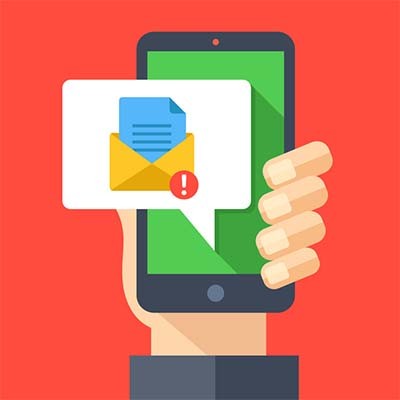
There’s one major reason why email is the preferred method of spreading threats like ransomware and other types of malicious software. The sheer number of messages that can be sent through email on its own increases the odds that a user will click on the wrong link or download the wrong attachment. How can you know the legitimacy of any message you receive in your email inbox?
It all starts by being aware of the issue at hand and staying vigilant of any potential threats. You should actively look for reasons not to click on links in suspicious emails. You can never be too careful, especially when there is so much on the line. Here are three warning signs that you can look for to avoid a malware attack via email.
Spelling and Grammar Errors
Nobody has perfect spelling and grammar, and it’s forgivable if they make a mistake here or there, but when an email is filled with errors that make it hard to believe its authenticity, perhaps you’re staring a red flag in the face. Professional messages will at least contain passable grammar that makes them easy to understand, but a malicious message might be filled with all sorts of nonsense that urges you to click on a link or download an attachment. Sometimes you might encounter a phishing email that’s very discreet, but this is more of an exception than the norm.
Links Leading to Suspicious or Unfamiliar Targets
Let’s say that you receive a message from your bank. When you hover over a link in the message, it shows that the link doesn’t lead to any site you’re familiar with. This is a clear indicator that you might be looking at a very well-orchestrated phishing scam. Before clicking on any link, just hover your cursor over it without clicking on it. In a bar at the bottom of your browser, you’ll see the target of the link. If it looks suspicious, you can easily disregard it or report it to IT.
Messages from Unknown Senders
Who did you receive the message from? If you know who sent the message, then perhaps the message is legitimate. However, it’s easy for hackers to spoof an email address and make it appear that someone else is sending a message. Remember, suspicion is better than falling into a trap. In a worst-case scenario, even a CEO or upper-level employee could have their account spoofed in a phishing or whaling scheme. If you suspect that this has happened, notify your IT department immediately so that measures can be taken against these efforts.
Thankfully, with a little bit of thought and caution, you can avoid most fraudulent emails, but it would be nicer if you didn’t have to worry about seeing these messages in the first place. An enterprise-level spam filter can keep fraudulent and spam messages at bay. To learn more, reach out to us at (416) 865-3376.
